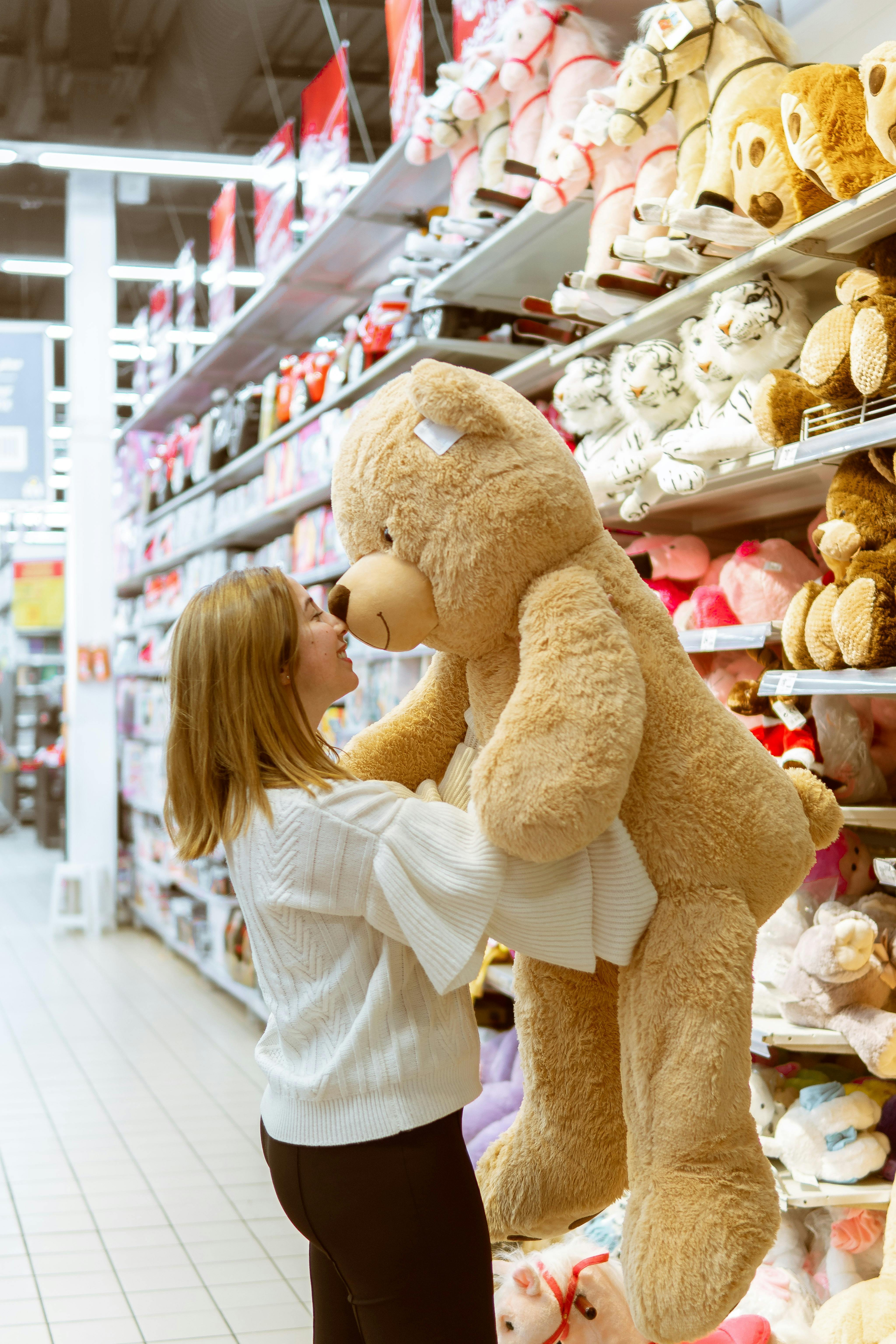In a world that tells us adulthood means mortgages, meal prep, and managing stress, an increasing number of adults are rejecting the script. They’re breaking the norms and buying plushies, building Lego castles, and collecting Hot Wheels.
And it’s not for their kids - they’re doing it for themselves. And they’re doing it without apology.
This is the kidult trend: adults unapologetically buying toys for their own joy, fueled by nostalgia, fandom, and the need for a little light-hearted escape. Far from being a childish indulgence, this “kidult” movement has become a cultural and economic force, making the toy industry rethink its approach and target market. The habits that were once mocked as immature in the 90s are now driving billion-dollar growth.
A Macroeconomic Paradox: More Play During Downturn
Traditionally, economic recessions meant reduced toy sales as families cut discretionary spending. In the last cycle, headline U.S. toy sales fell 8% in 2023 before flattening in 2024, according to Circana’s retail tracking data.
The kidult segment defies this pattern. Step into a Lego store on a Saturday morning in 2025, and you’ll find not just kids tugging at their parents’ hands, but thirty and forty-somethings poring over 3,000-piece “Icons” sets. “I like building Legos; it’s just fun. It’s self-care, those moments when you can forget about the world for a little bit and focus on something,” said Fraser Cottrell, a 30-year-old from the UK.
You see a similar trend on social media platforms. For those who use TikTok, you’ll come across twenty-somethings unboxing $80 Labubu plushies and showing them off on carefully curated shelves. This is the kidult segment, and it’s rewriting the recession playbook.
This time, the spending is increasing as adults use toys for stress relief, affordable entertainment, and social connection. In early 2025 (Jan-Apr), Circana data showed U.S. toy dollar sales grew by six percent, and that adults (18+) were the fastest-growing and highest-spending cohort, up by 12 percent year-over-year in Q1 and accounting for $1.8 billion, which is more than any other age group.
Why? Part of the answer lies in how people cope with uncertainty. When macro anxiety rises, consumers often shift to small indulgences that deliver outsized emotional payoff. Deloitte’s 2025 consumer tracking shows financial well-being sliding but value-seeking “treat” behavior persisting (trading down in some categories while selectively splurging in others), which is a consistent pattern consistent with affordable-luxury substitution.
This affordable-luxury substitution has always existed (think the “lipstick effect”), but for many adults today, the indulgence of choice isn’t lipstick or coffee. It’s a rare collectible, a build set, or a plush that sparks nostalgia.
What’s Driving The Toy Boom for Adults?
Adults now account for 28% of global toy sales, with the U.S. adult toy market surpassing $7 billion as of June 2024. These purchases offer emotional comfort and are seen as self-care tools.
As Melissa Symonds, Executive Director of UK Toys at Circana, tells BBC News, “Adults are buying Lego and collectibles for their positive mental health benefits, as they spark nostalgia and bring escapism from global turmoil.”
This consumer insight echoes findings from the American Psychiatric Association’s July 2023 Healthy Minds Monthly Poll, which reported that 46% of U.S. adults use creative activities to relieve stress and anxiety.
While the APA’s examples include puzzles, crafting, and creative building, the underlying mechanism applies to adult-oriented toys and collectibles: engaging the hands and imagination offers a mental reset, improves mood, and provides a sense of accomplishment, all of which are driving the rise of the kidult market.
Limited Supply, High Desire: The Scarcity Play
Beyond emotional comfort, another powerful driver of the kidult boom is scarcity, the classic marketing principle that when something feels rare or hard to get, it instantly becomes more desirable. It’s the same “limited edition” play that’s been used for decades to spark urgency and FOMO, and it turns out that it works just as well on grown-ups as it does on kids.
Case in point: Pop Mart’s Labubu. Labubu dolls are sold in blind-box formats, which means buyers can’t see which character they’ll receive. This method inherently creates “artificial scarcity,” encouraging repeated purchases in hopes of getting rare variants.
“I was only going to get one Labubu, but now I almost have every single one from every set! The blind box concept is fun and kind of addicting,” says Sharon Wu, 32, from Southern California. “And in many ways, I feel like I’m healing my inner child who hardly had toys like this growing up. On the other hand, I think it’s important to invest in things that bring us joy from time to time.”
Scarcity alone would be potent, but Labubu was further catapulted to fame by K-pop influencer exposure. In April 2024, Lisa from Blackpink posted an Instagram Story of herself holding a Pop Mart Labubu set and later showed a Hermès bag with a Labubu keychain. The posts went viral, igniting a buying frenzy that soon spread across Asia, Europe, and the U.S.
Lisa from Blackpink shows a Labubu set and keychain, sparking the toy’s viral rise (Source)
Soon after, Rihanna, Dua Lipa, Kim Kardashian, and David Beckham were also spotted with Labubu toys, signaling its crossover appeal as both collectible and fashion accessory.
Dua Lipa spotted with Labubu accessories, boosting the toy’s celebrity appeal
Celebrity endorsements turned Labubu from a collectible to a status piece, driving both cultural and financial value. The result? In Australia, Labubu dolls, once priced at $20, now soar up to $1,580, with some rare editions auctioning for $230,000. Long queues and sell‑outs are becoming the norm.
However, there’s one caveat worth keeping in mind: growth is only as strong as the scarcity behind it. Think about why the Hermès Birkin became a status symbol. More than just the design, it was the near-impossible access. Pop Mart is scaling fast, but if hype turns into overexposure and every other micro-influencer starts posing with a Labubu, this magic of “hard to get” can disappear just as quickly.
Licensing And Fandom Culture
One of the fastest ways for a toy brand to win over adult buyers is through licensing, which basically means paying for the rights to use beloved characters, stories, or worlds on their products. It’s a direct line to nostalgia and fandom, the two emotional levers that drive the kidult market.
When adults see a collectible tied to a franchise they grew up with, whether it’s Harry Potter, Pokémon, or Deadpool, the purchase moves beyond the product itself. It’s about owning a piece of a story that shaped their childhood, and displaying it as part of a shared cultural identity.
Licensing taps into both:
- Nostalgia: You get to “own” a piece of a story you loved as a child.
- Fandom: You get to display and share it in a way that connects you to a larger community of fans.
The numbers back this up. Licensed toys now account for 37% of U.S. toy sales, and that share is growing faster than the overall market.
A perfect case study is Build-A-Bear Workshop. Traditionally seen as a kids’ store, the company has successfully reinvented itself by leaning into nostalgia, licensing, and adult-focused experiences. From Harry Potter to NFL-themed bears, these collaborations have helped push teen and adult sales from under 20% in earlier years to 40% of the customer base. As the company says at Build-A-Bear Workshop, “It’s never too late to have a happy childhood.”
NFL-themed bears at a Build-A-Bear Workshop, part of its expanded licensed lineup, attracting more teen and adult customers (Source)
CEO Sharon Price John credits this shift to a deliberate licensing strategy that taps into millennial favorites like Harry Potter, Pokémon, Deadpool, The Matrix, and Ted Lasso. The approach has paid off: Build-A-Bear closed the year ending February 2025 with $496.4 million in annual revenue, marking its fourth straight year of growth.
The Role Of Social Media And Community
What was once a niche hobby, sometimes even tied to a more reclusive lifestyle, has become a mainstream, aspirational pursuit, thanks to social media and new-age influencer culture. Platforms like TikTok, Instagram, and YouTube have made “toy collecting” look snazzy and cool, especially when it’s your favorite influencers or celebrities doing the unboxing.
This shift has given rise to a new wave of micro-influencers whose entire niche is toy culture. Some curate meticulously lit Lego build sessions, others livestream blind-box openings, and a few have amassed entire wall-to-wall plush “squads.” Many now command audiences in the tens of thousands, proving that toy fandom is a viable creator-led economy.
The effect is twofold:
- Social validation: Posting a rare collection online becomes a signal of taste, personality, and cultural affiliation.
- Demand acceleration: Viral content can turn a modest product drop into a same-day global sell-out, especially when brands understand the science of virality and use analytics to time, frame, and amplify their releases.
A perfect example is the video “I Bought EVERY POPMART Mystery Box,” in which the creator unboxes every Pop Mart blind box, including rare Disney and Labubu editions, insisting on “showing it all.”
Such unboxing trends and short-form videos do a great job of glamorizing the hobby. They create FOMO around new releases, spark resale frenzies, and inspire casual viewers to become first-time buyers.
A casual browser might click on a video out of idle curiosity, only to find themselves drawn into the rhythm of reveals, rare finds, and lively comment threads of what feels like a tight-knit internet community. Before long, they find themselves participating, buying, and calling themselves collectors.
Shift in Spending Priorities For Dinks & Single Adults
Across much of the developed world, the traditional child-focused toy market is shrinking fast. DINK (Dual Income, No Kids) households are on the rise, especially in countries with persistently low fertility rates.
OECD data shows that most developed economies now have total fertility rates well below the replacement level of 2.1: Japan’s is around 1.2, South Korea’s 0.7, much of Western Europe between 1.3–1.6, and the U.S. sits at 1.6.
Without the financial and time commitments of parenting, adults in these households have more freedom to indulge in self-oriented, playful purchases, whether that’s a Lego Icons set for the coffee table, an $80 Labubu plush, or a limited-edition Hot Wheels model.
With fewer children per household, toy companies also have less pressure to fight for a shrinking pool of child consumers, and more incentive to diversify into adult segments.
And since it’s tied to long-term demographic change, this isn’t a passing trend either. Brands that actively position for adult buyers today are future-proofing against the continued decline of the children’s market.
That said, reaching this audience means rethinking marketing entirely: traditional kids’ TV advertising spots won’t work here. Social and influencer-led campaigns are the direct route, tapping into the platforms and communities where these adult collectors already spend their time.
Why the Kidult Toy Market Isn’t Going Anywhere
The kidult toy market is more than just a passing fad. It’s a shift in how adults choose to spend, play, and connect. Nostalgia, mental health benefits, scarcity-driven hype, and the pull of fandom culture have turned this industry into a multibillion-dollar juggernaut.
And with DINK households growing, social media turning plushies into status symbols, and adults investing in small joys that deliver big emotional payoffs, the audience for grown-up toys is only getting bigger.
For brands, the opportunity is huge but fragile. The same forces driving demand, including scarcity, social media virality, and emotional resonance, can fade fast if mishandled. Winning in this market means creating products that feel worth cherishing, not just buying.
So here’s the real question for the next decade: will the toy industry keep this magic alive for adults, or will it flood the shelves and turn nostalgia into just another commodity?





-1.jpg?width=300&height=300&name=an%20email%20image%20for%20our%20new%20newsletter%20with%20the%20text%20_Decoded_%20BFCM_%20its%20about%20the%20holidays%2c%20shopping%2c%20retail%2c%20spending%20so%20gifts%2c%20shopping%20bags%2c%20money%20(1)-1.jpg)